I’m specifically referring to those on MRT trains.
To begin the history of seat removal and modification we would have to go back to the end of the 20th century, when SMRT Trains began their series of seat removal experiments by downsizing bench lengths, from the former 9 seats to 6, therefore adding an extra 1.5 seats’ width to the side of each door.

Quick train trivia: Right before 2000, there were only 85 trains running on the entire North-South and East-West MRT lines, from Jurong East to Marina Bay, and Pasir Ris to Boon Lay, without Expo and Changi Airport, and obviously, there weren’t enough trains to do decent frequencies (by decent I mean 3 minutes or better since there weren’t any alternatives to the system yet), and neither was extending the trains an option (still true today), so SMRT had to settle for the next best thing, which was to increase the capacity of a fixed train size, by increasing standing space. Since all the seats were already side-facing (recap: side-facing seats give more standing space than front/rear facing seats!), there was really no choice but to remove some just to squeeze out that extra bit of space. This 3-seat removal from the motor cars of C651 trains was successful to some extent, the change remaining as such to the present day (we won’t ever know if the refurbishment changed it back to the standard 7 seats, because all the media shots showed only the driving trailer and middle cars, casually leaving out the “blue seat” ones.).
Then as the 21st century began the middle cars of the same C651 trains were subject to a different type of experiment: removing seats altogether for the first time. Seeing the success of the reduced seats in the motor cars, SMRT probably wanted to go further and test out outright seat removals. So they selected a bunch of them, tore out the benches, and instead placed bumrests in their place. Below is probably the only photo of this modification on the Internet, taken circa 2003. Needless to say, back in those days people weren’t very happy with having fewer seats on trains, and unlike the previous test, this one completely flopped, and SMRT would never consider seat removal again for another decade.
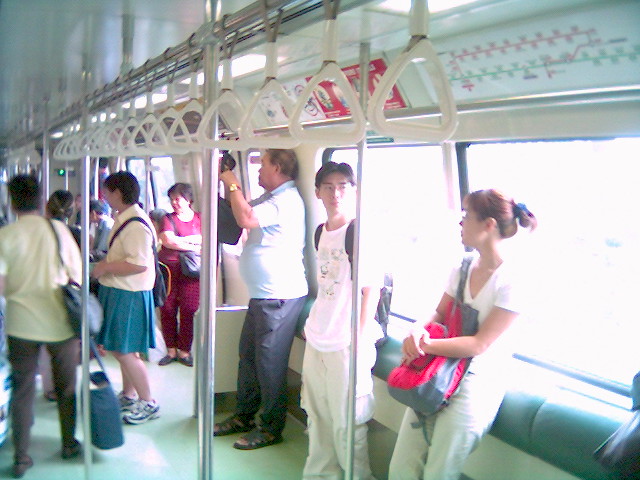
After 2011, when double trouble erupted in the tunnels, another less-known event at the time was the completion of the 5-year C151 refurbishment, as the last batch of C151 trains were revamped to make them more modern. To deal with the overcrowding problem that December 2011 flagged out, a two-pronged approach was taken: buying new trains (57 C151B + C151C) and upgrading capacity on the existing ones. The last 10 C151s to be refurbished had the 14 seats in the middle of the car ripped out and replaced with… cold metal bars that aren’t even ass-friendly to lean on!
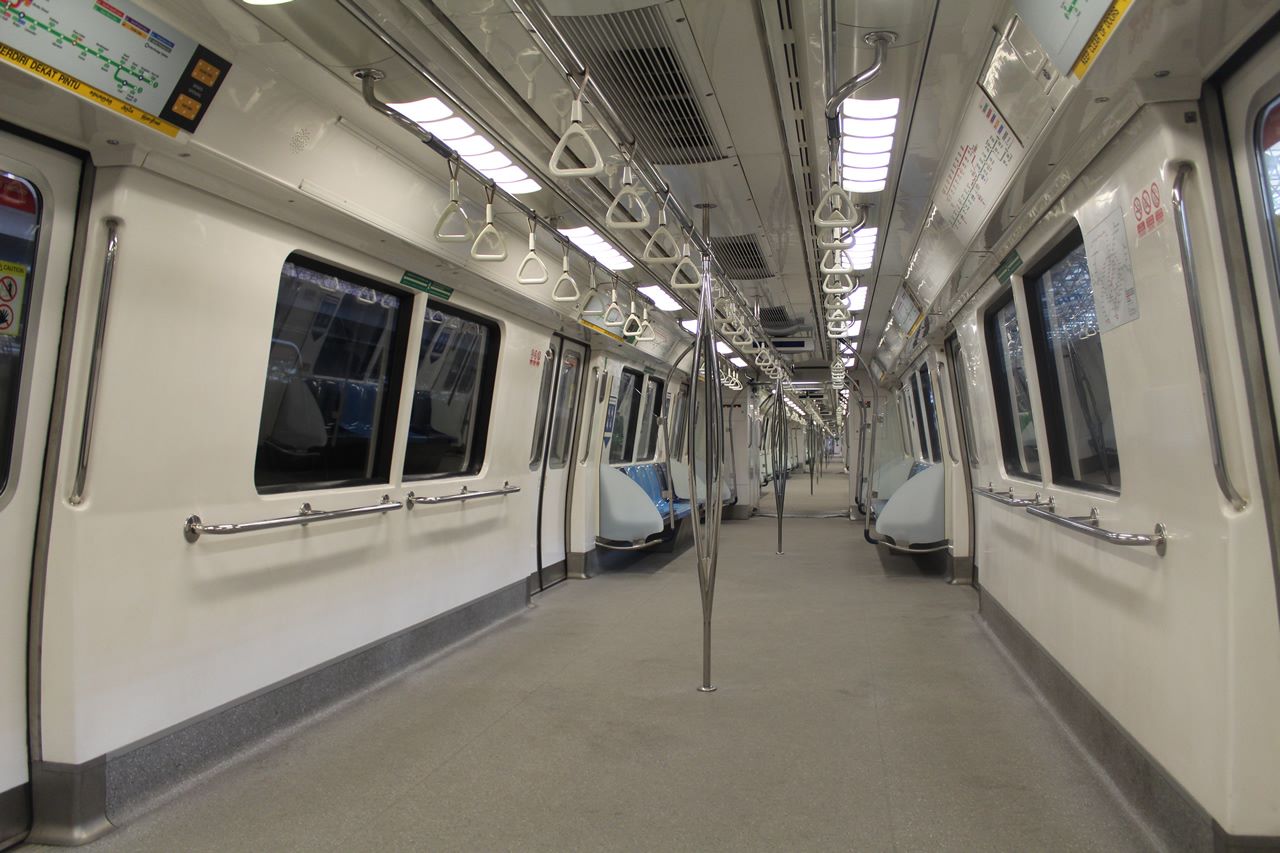
Later on this modification would be done to the remaining 56 C151 sets, as well as the 25 C751A sets, because the North-East Line was also quite screwed with overcrowding issues prior to 2015.

Then came the C151C, which arrived pre-built with tip-up seats.

Why tip-up seats?
While I’ve previously noted the benefits of longitudinal seating, or outright removing seats for increasing capacity without increasing the size of the vehicle, there is a catch to that.
Even during (and likely after) the pandemic, there is still a stark contrast between peak and off-peak load levels on trains and perhaps even buses!
While trains still become one big mess of overcrowding during the peak hours (Tokyo vibes go brrr), during the off peak the need for capacity goes down a significant bit as there are fewer people travelling during the off-peak hours. In some cases, you might find a seat or two for yourself.
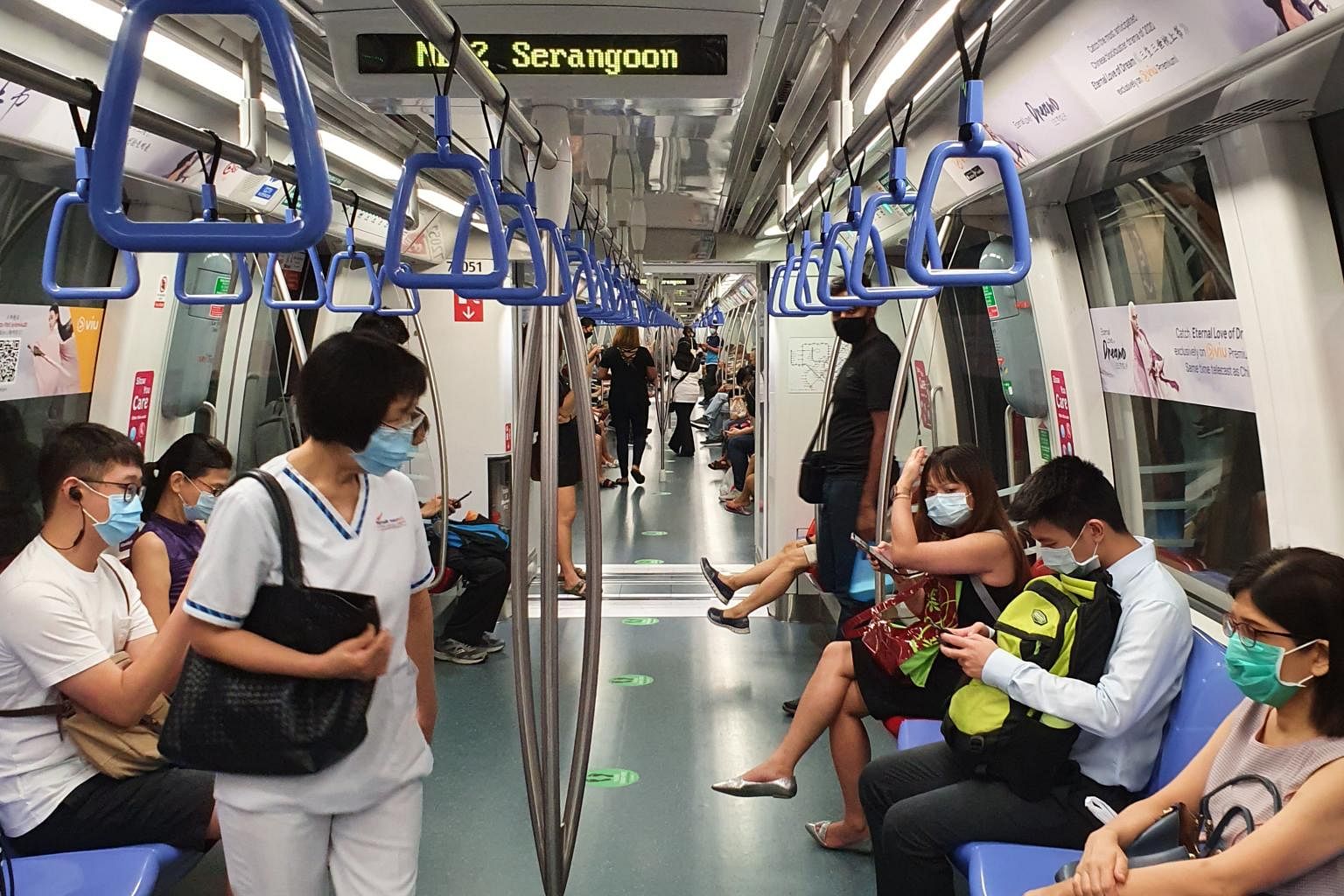
This is even more apparent in the buses.

Of course, the thing about removing seats altogether just for the sake of peak hour crowds, is that the off-peak travellers will not exactly appreciate having less seats to sit on when the trains are emptier when they make their trips.
The general idea of the tip-up seat is really very simple: to be folded down during off-peak hours therefore keeping the normal number of seats, and then folded up during peak hours to accommodate more people in the same train. A win-win situation that benefits both peak and off-peak travellers.
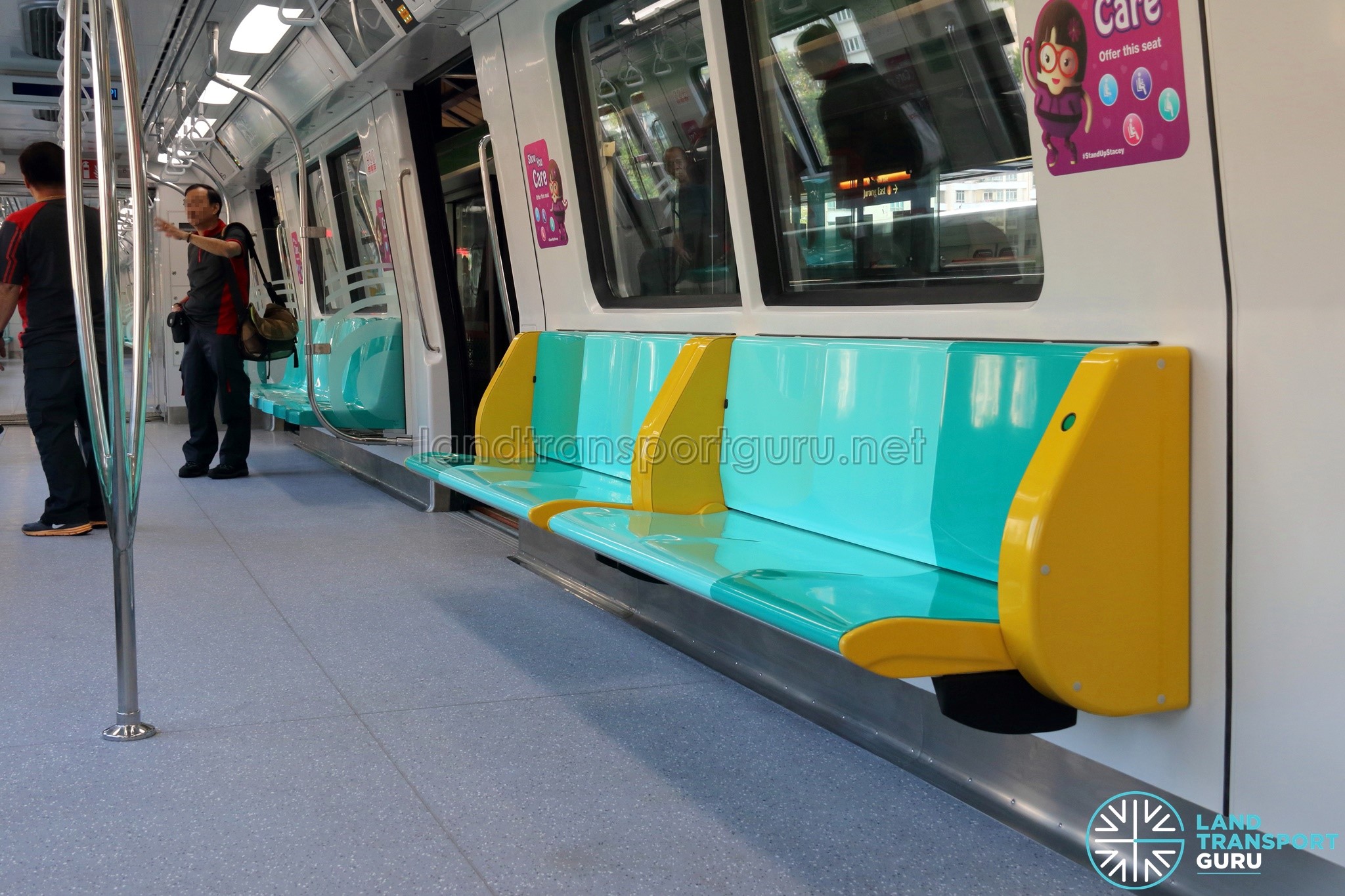
The later CT251 on the Thomson East-Coast Line also featured this, though in the early stages there really was no need for tip-up seats.
![Tip Up Seats][SMRT] CT251 (2030) from Woodlands South to Woodland(13) - YouTube](https://i.ytimg.com/vi/QXBH_e3OAXc/maxresdefault.jpg)
The problem with them
Introducing tip-up seats into the already-bursting trains was a welcome change that theoretically, would benefit most. (Emphasis: theoretically) Except, the way it was implemented, i.e. the set-up and configuration of these new tip-up seats, make it such that it will probably never live up to its use to be folded up or down according to the time of the day, for one simple reason: there will always be someone on board.
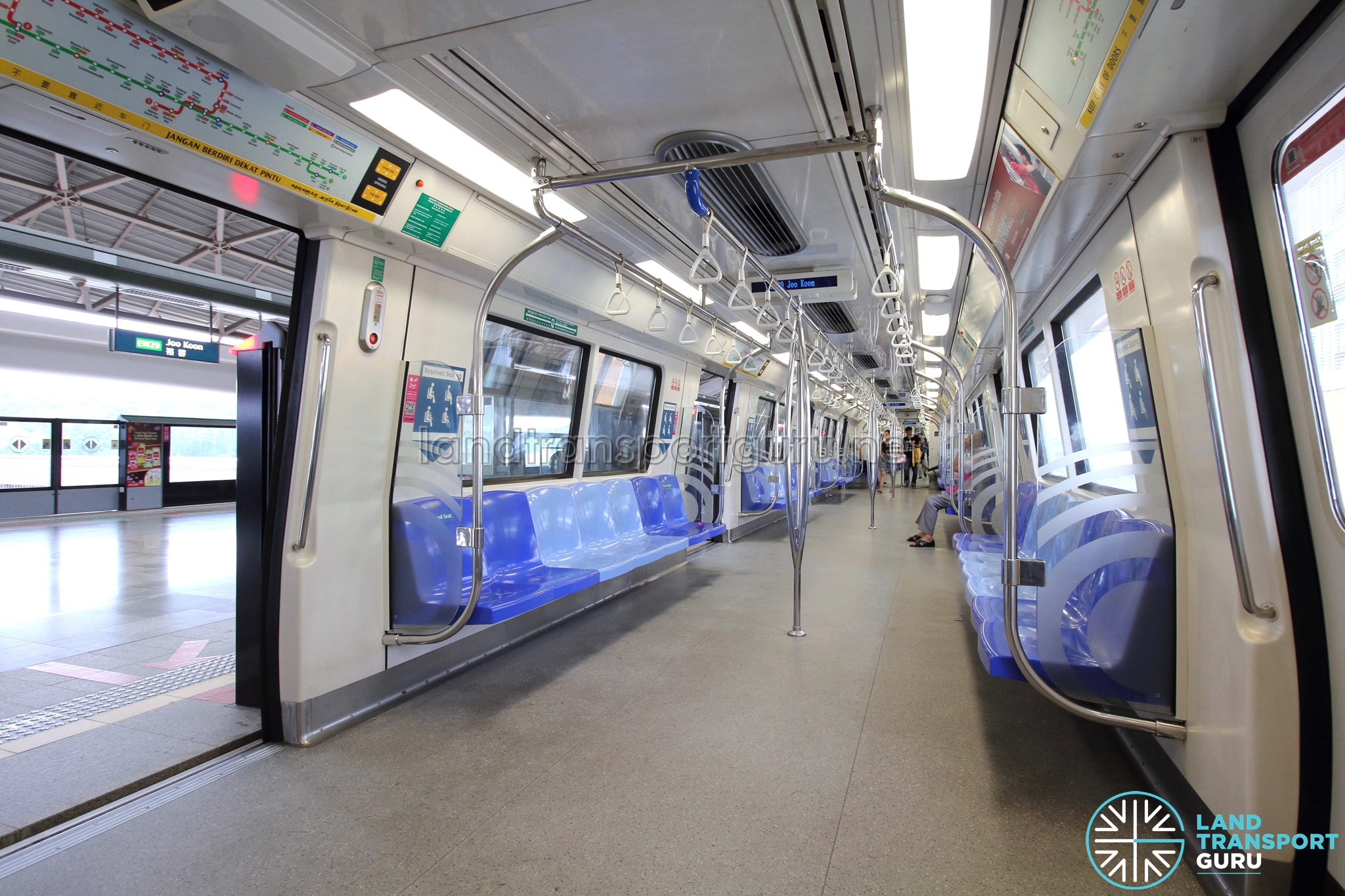
Look at the above picture. This is a photo of a train taken at Joo Koon (pretty far out on the EWL) during off-peak hours. Yet there is still a handful of passengers on board! Closer to the peak period (or what I call the peak fringes) there will definitely be more (in fact given how peak fringe frequency is quite shit it could be as crowded as the peak…) passengers in the cabin, some of which will definitely be sitting on the tip-up seats.
Here comes the thing. The tip-up seats can be either controlled from the driver’s cabin, or directly beside the seat in the form of a switch hidden behind a flap under the seat. Take into the account the fact that the seats are designed such that either 3 seats form one continuous unit (or 2 seats, for some CT251 tip-up seats), meaning even one person sitting on them, much less 2 or 3, would prevent the operator from closing the seat without “evicting” the person sitting on it, something I don’t think SMRT is audacious enough to do, and something I don’t think the passenger would appreciate either. And remote-controlling the seats from the cab is another no-no, since again, I don’t think SMRT wants to get sued by anyone getting injuries from getting squashed by the automatically folding seats.
Then what about at the termini, where many claim would be a safe place for the operator to toggle the seats? The problem with this claim, is that for it to be failproof and safe for passengers, we must assume that there is always a risk of a passenger sitting on the seats to be toggled at the terminus, and therefore no passenger must be sitting down when the train is at the termini station. Except, from the current set-up of the NSEWL and TEL termini stations, the only station where there will not be a chance of a passenger sitting down on the tip-up seats is Marina South Pier (and soon Pasir Ris and Tanah Merah), which utilises a turnback siding to switch directions instead of a scissors crossing. The former involves clearing the train upon arrival, going out to the turnback siding, switching directions, and then coming back into the station again to pick up passengers, while the latter involves the direction change being done while the train is at the platform and passengers are going in and out at their free will.
So it is a grand total of just 3 (three!) stations that are equipped to handle the seat toggling safely, by their argument.
Given these circumstances, as SGTrains said in their blog post on this matter, “there might be a likelihood that the seats will just be left folded down the whole day.” Which I completely agree with. And 3 years on from the introduction of these trains, indeed SGTrains was proven right: these tip-up seats have yet to be seen folded up even during peak hours! Not sure if spending more on the mechanically more complex seats that won’t be used was a good idea. White elephant? I think so.
The change

The problems with the current tip-up seats are:
- They bunch too many seats together into one unit
- They cannot be deployed easily without causing injury
- They cost a tad too much due to their mechanical components
- They don’t even get used at all.
Well, there is actually a type of tip-up seat that exists in Singapore that not many know of, or speak about. You can find them on all the Euro VI/hybrid/electric buses (plus the Euro V A22) in their wheelchair bays. This:
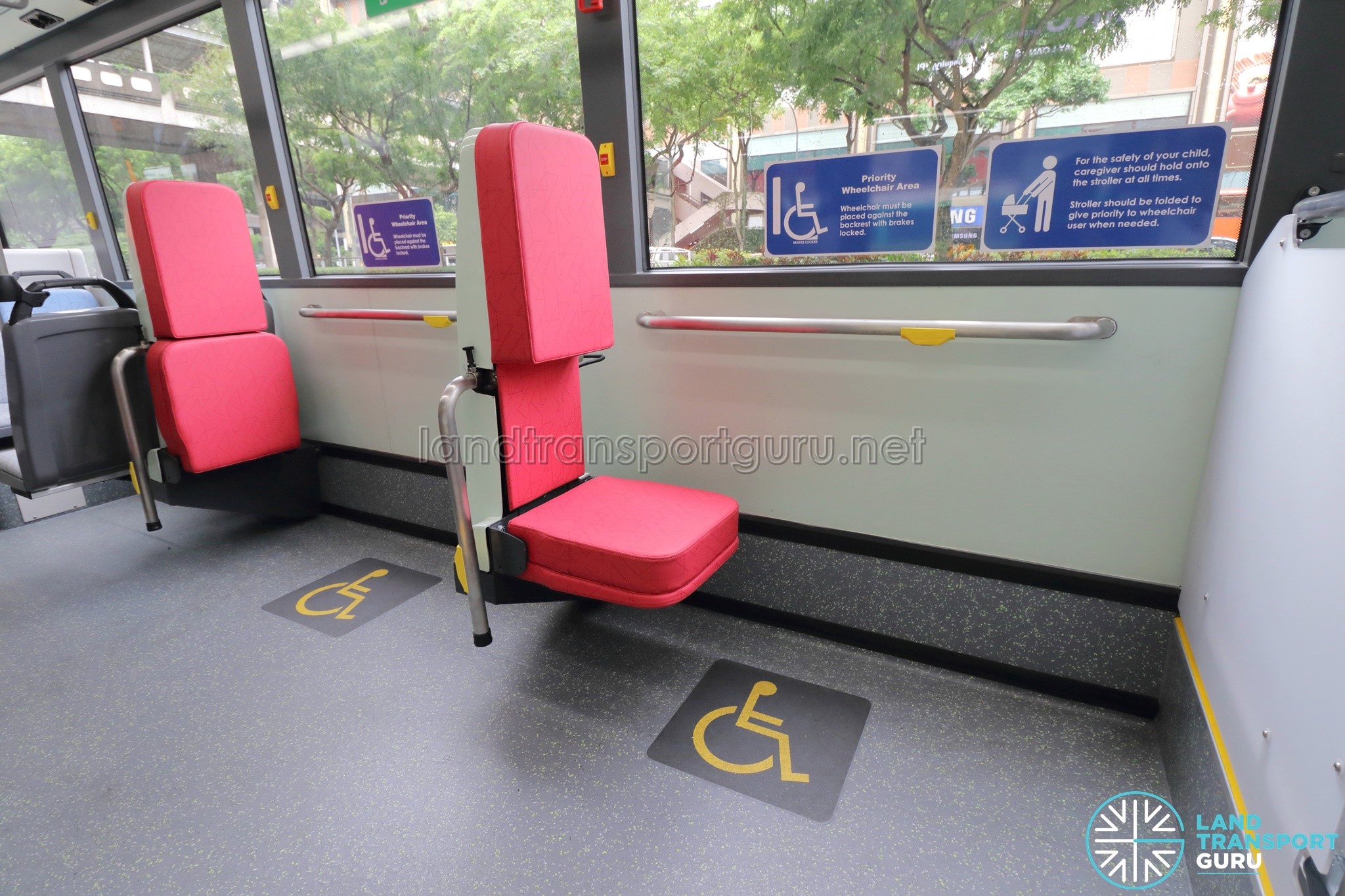
There’s a less bulky and more “flexible” variant of it that some BRT systems utilise in place of wheelchair bays to hold wheelchairs:
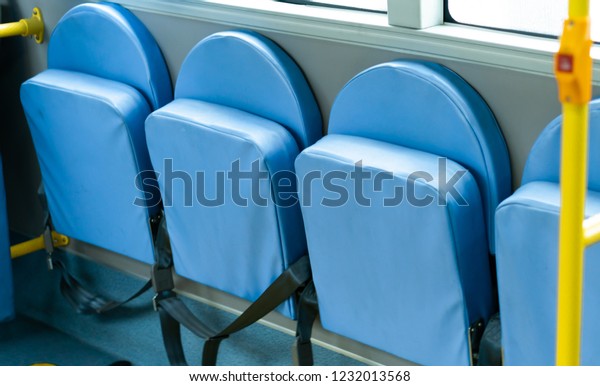
Basically, the idea is that instead of one long foldable bench, the bench gets split up into individual seats each accommodating one butt. And instead of centralised operation from the driver’s cab or requiring a key (the current design), why not just let the passengers do the deployment themselves? The seats get weighed down by their heavy arses, and when they stand up the spring mechanism automatically causes the seat to spring back into the folded position. And, unless I’ve been lied to this whole time, it is far cheaper and easier to install and use than some bulky electrically operated plastic bench?
In fact, we did see this idea come about on the LTA Smart Bus (aka SG4002G, the three-door A22 bus that SMRT deployed on 190 and 901 for a while…), meaning they were aware of such a concept of folding seats.

Other concept buses also featured this type of seat.

And here’s a rail application of this seat concept, on the Melbourne Metro, to show that this thing also works for trains too.

There are newer trains entering service, very soon, and the new rolling stock additions of the 2020s will be quite exciting, especially since we’re looking at an Alstom puppet Bombardier’s role as train manufacturer here transform from merely “one of them” to a major rail supplier being the dominant supplier for the NSEWL and DTL, two particularly big lines in terms of fleet size. And of course, new players like Hyundai Rotem (as builder, not refurbisher). We shall see what these builders will do to address the issue of insufficient capacity on the trains. Hopefully, tip-up seats that we can find at the cinema, minus all that plush upholstering.
Liked this article? Sub, like and share this post, to spread the love around! E:3


Way cool! Some extremely valid points! I appreciate you penning this post plus the rest of the website is also really good.
LikeLike
Your style is so unique in comparison to other people I have read stuff from. Many thanks for posting when you have the opportunity, Guess I will just bookmark this blog.
LikeLike
Pretty! This has been a really wonderful article. Thank you for providing this information.
LikeLike
I love it when people come together and share ideas. Great blog, continue the good work!
LikeLike
I must thank you for the efforts you have put in writing this site. I really hope to view the same high-grade blog posts from you later on as well. In fact, your creative writing abilities has inspired me to get my own, personal blog now 😉
LikeLike
Good analogy AMC, I would like to point out that this topic is seeing just a wee bit more debate today, after a mini rant of mine on Reddit became the topic of a journalist at TODAY,https://www.todayonline.com/singapore/trending-foldable-seats-mrt-trains-dont-give-more-standing-room-redditors-say-1939776.
RIP that guy getting a promotion anytime soon
LikeLiked by 1 person